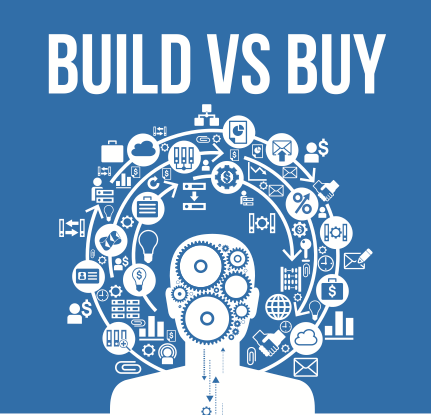Build vs. Buy: Why Building an In-House Portal Solution Could Decrease Your IT Department’s Quality of Work

Building an in-house portal solution is something that almost any developer can do with enough manpower and time. In the grand scheme of things, your IT team might contend that they have the smarts and available bandwidth to build a portal solution, yet doing so will bring ups and downs as well as unforeseen challenges. While building a partner portal is something that can be accomplished, there is more to the story than that initial lift by your IT department.
The build vs. buy question is something I come across quite a bit. There are plenty of companies willing to put their development teams to work on building a partner portal, but once the project is underway they are often caught off guard by unforeseen challenges. Companies often view building a portal solution as a money saving opportunity, but the harsh reality is that there is little truth to this assumption. At the onset, it will appear that savings are real since there is no initial financial outlay for the setup cost associated with a
third party solution. It is not until you ask yourself “What is it going to cost to maintain the portal?” that the upfront savings begins to lose its luster. Like most technical projects, things are going to break, training people to use the technology is a thankless job and users are going to need support. I can assure you that your IT department is not going to show user support the same enthusiasm they had for the build.
What does this mean for your company? Your IT people would have to commit to the portal for the long haul – even after they finish building the software. While your IT
development team could be focusing on making advancements in your actual product, they are stuck maintaining the portal – something that would have been avoided by choosing a third party solution as your portal provider.
Another drawback that companies find when they build out an in house solution, is the product does not offer the complete functionality all interested parties – partners and their manager’s, both desire and require. Generally speaking, IT professionals don’t understand
the channel because they’re not close to the user experience. They understand code and building software, which is why you hired them. Functions like MDF and Deal Registration are meaningless terms to them and create an environment that says, “just build it” in their eyes. With a third party solution, your portal is supported by people who are experts in knowing what you actually need inside the portal and are committed to your channel business success – today and tomorrow. Additionally, a third party vendor has a knowledge base to support your success both today and in the future because they have numerous clients dedicated to the channel who constantly submit feedback and make suggestions that ultimately make the product better.
Would you ask your IT department to create a replica of Microsoft Office? No way. Building a partner portal solution is really not any different. In the long run, when you are looking for specific functionality that ties to your bottom line, it is incredibly important to think about both the initial investment as well as the cost of maintaining the portal long term. Like anything else, software is an investment, and it should be looked at from many different vantage points as well as its long-term value proposition before you decide whether to build or buy.
Why The Browser is the Ultimate Integrator
Release: Maps & Custom Fields Everywhere